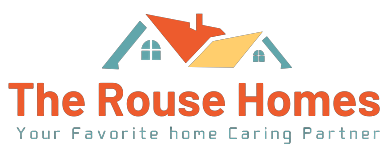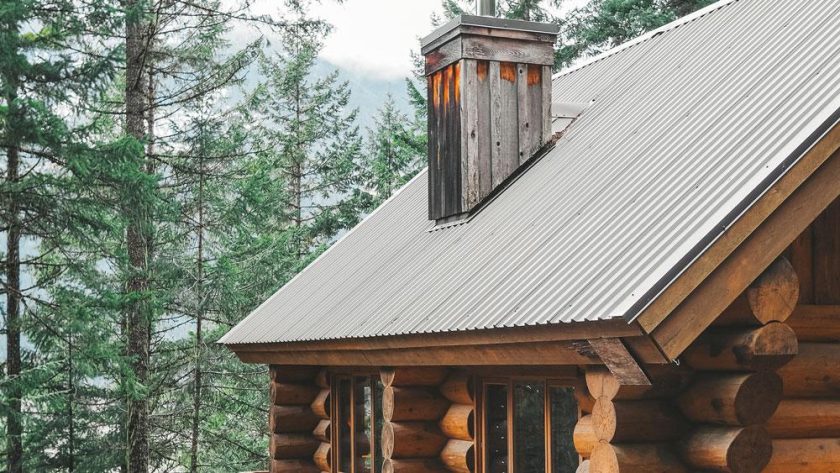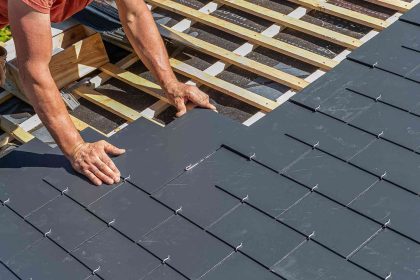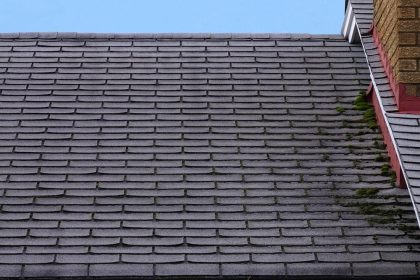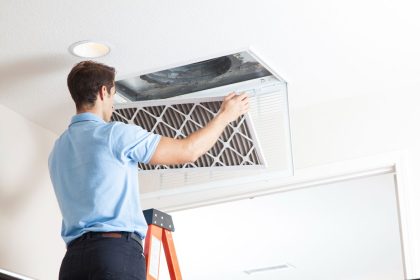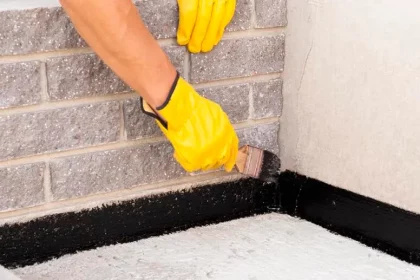Log homes exude a timeless charm and natural beauty that make them a popular choice among homeowners seeking a unique and rustic aesthetic. One of the essential elements of a log home’s design is the roof, which not only adds to the overall appearance but also protects the home from the elements. Metal roofing has emerged as an ideal option for log homes, thanks to its durability, energy efficiency, and low maintenance requirements. In this article, we will explore various design considerations for incorporating metal roofing into log homes and provide helpful tips for achieving a harmonious and functional design. For more information on metal roofing options, check out London Eco Metal.
Compatibility with Log Home Style
According to “Secured Roofing” When selecting a metal roof for your log home, it’s important to consider how the roof’s design and appearance will complement the overall style of the home.
Log homes come in various styles, from traditional and rustic to modern and contemporary. Choose a metal roofing style and color that will enhance your log home’s character and blend seamlessly with its natural surroundings. Some popular options include standing seam panels, metal shingles that mimic the look of wood or slate, and corrugated panels with a rustic, industrial appeal.
Roof Pitch and Snow Load Considerations
Log homes are often found in areas with heavy snowfall, making it crucial to consider the roof’s pitch and snow load capacity. A steeper roof pitch will encourage snow to slide off more easily, reducing the risk of ice dams and potential damage. Metal roofs are ideal for this purpose, as their slick surface facilitates snow shedding. Ensure that your metal roof is designed to withstand the snow load in your region and consult with a structural engineer if necessary.
Insulation and Ventilation
Proper insulation and ventilation are critical in log homes to maintain energy efficiency and prevent moisture-related issues. Metal roofing can be combined with various insulation materials, such as spray foam, rigid foam, or batt insulation, to create an energy-efficient building envelope. Ensure that your metal roof design includes adequate ventilation to allow moisture and warm air to escape, preventing condensation and potential damage to your log home’s structure.
Flashing and Waterproofing
Log homes require special attention to flashing and waterproofing details to prevent water infiltration and potential damage to the logs. Choose a metal roofing system with high-quality flashing components that can be easily integrated with the log walls and other roof penetrations, such as chimneys or vents. Ensure that all flashing is properly installed and sealed to create a watertight barrier.
Expansion and Contraction
Metal roofs, like all materials, expand and contract with temperature fluctuations. This can lead to movement and potential stress on the roofing system and log home structure. Choose a metal roofing system designed to accommodate expansion and contraction, such as standing seam panels with concealed fasteners or metal shingles with built-in clips. These features will allow the roof to move freely without compromising its watertight integrity or causing damage to the log walls.
Color Selection and Finish
The color and finish of your metal roof will have a significant impact on the overall appearance of your log home. Choose a color that complements the natural wood tones of your log home, as well as the surrounding landscape. Earthy colors, such as shades of brown, green, or gray, are popular choices for log homes. Additionally, consider a metal roof with a protective finish, such as a high-quality paint or coating, to enhance its durability and resistance to fading, chalking, and rust.
Maintenance and Durability
One of the key advantages of metal roofing is its low maintenance requirements and long-lasting durability. However, it’s still essential to ensure that your metal roof is properly maintained to extend its lifespan and protect your log home. Regularly inspect your metal roof for signs of wear, such as loose or damaged panels, and address any issues promptly. Keep your roof free from debris, such as leaves and branches, and clean gutters to prevent water damage.
Sustainability and Eco-Friendliness
Choosing a metal roof for your log home is an eco-friendly decision that contributes to a more sustainable future. Metal roofing materials are often made from recycled content and can be recycled again at the end of their lifespan, reducing waste and conserving resources. Additionally, the energy efficiency of metal roofs can help reduce your home’s carbon footprint and lower utility bills.
Local Building Codes and Regulations
Before installing a metal roof on your log home, it’s essential to familiarize yourself with local building codes and regulations. Some regions may have specific requirements for roofing materials, snow load capacity, or fire resistance. Consult with a professional roofer or building inspector to ensure your metal roof meets all applicable codes and standards.
Professional Installation
To ensure the success of your metal roofing project, it’s crucial to enlist the services of an experienced professional who is familiar with log home construction and metal roofing systems. A qualified installer will have the knowledge and expertise to address the unique challenges of log home roofing, ensuring a high-quality installation that will stand the test of time.
Conclusion
Incorporating a metal roof into your log home design offers numerous advantages, including durability, energy efficiency, and low maintenance requirements. By considering factors such as compatibility with your log home’s style, roof pitch, insulation, and ventilation, you can achieve a harmonious and functional design that enhances your home’s beauty and performance. Remember to consult with a professional roofer to ensure your metal roof meets all local building codes and is expertly installed for long-lasting protection and peace of mind.
